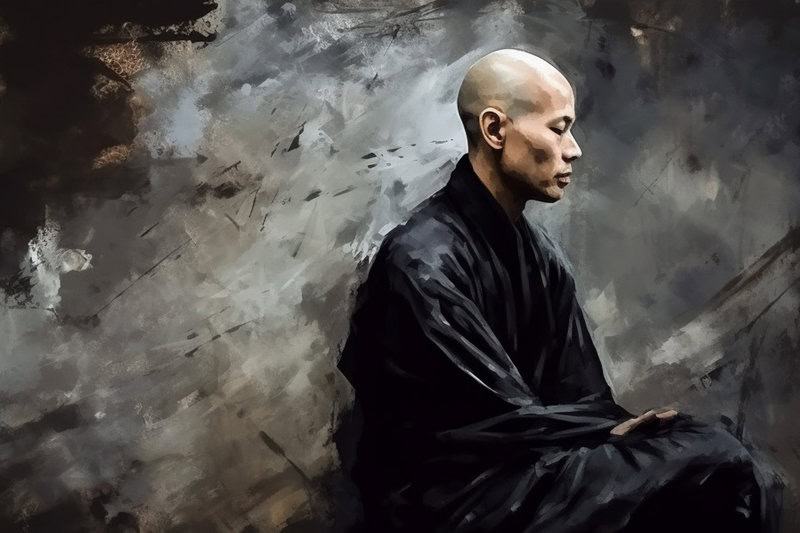Hi *******, I’m not sure if I understand the main part of your email – are you referring to the Four Ordinary Foundations, ie, the four thoughts which turn the mind to Dharma and away from Samsara? That’s what I understood.
However, I notice you received a wonderful reply on the Four Extraordinary Foundations from *****. Perhaps at this stage, I won’t go into any great detail, but just respond to your points below?
1. When referring to practice, does it mean contemplative, meditative or ritualistic?
Study, reflection and meditation
Generally, practice entails the three wisdoms.
Study or listening
That is, when engaging with teachings, the first thing one does is Study, (or the Wisdom of Listening, as it is traditionally called). So study is practice, it is the basis of practice. That study may be listening to the words of your teacher, or reading the words of the Buddhas, and Gurus. In the Kagyu tradition, the words of your Guru are taken as being primary importance, over and above those of the Buddhas.
Reflection
Then, the second wisdom, or method of practice, is to Reflect. So, you take the teachings which you have received from your teacher, or studied from texts, and you reflect on them. This may take the form of analysing them, of comparing different versions of that teaching, of looking at how that teaching reflects in your own experience, in your own mind. It may involve discussion with others.
It is sometimes likened to a bird circling around a pool … you keep circling round and round the subject at hand. Or, another metaphor for reflection is the dropping of a pebble in a pool, and the ripples from that. You drop the subject matter into your mind, and watch the reflections that arise.
Meditation
Then, finally, one is ready for the third aspect of practice, on that particular aspect of the teachings, which is the wisdom of Meditation. So, having reflected on that teaching, you allow a state of some clarity to develop in your mind, and you bring that subject to mind, within that mind of clarity, and hold your awareness on your understanding of that teaching.

The three wisdoms are progressive, at least in terms of depth of understanding and realisation, but one moves backwards and forwards between them on any particular subject matter ….
I hope that covers contemplation (reflection), and meditation in your question.
Rituals bring symbolic meaning
Ritualistic? Well, ritual is just a support for meditation, a means by which one generates realisations. Bringing symbolic meanings to all one’s actions helps you to deepen your meditation experience. Ritual is therefore practice in the sense that it is a way in which one uses certain experiences (ie, certain actions) to point towards other experiences. (in a sense!!!!). Ritual is also taken as referring to a sequence of actions of body, speech and mind, such as in a sadhana, which progressively lead through a deepening of view and practice, to induce realisation.
2. There are teachings on the websites on four foundations, but what about road maps or milestones of the actual practices?
Well, as in the other excellent reply to your mail from Baldo, I’d suggest that the teachings given there and elsewhere are a very good roadmap indeed, and one shouldn’t worry too much about milestones. When you have any serious issues arising from your practice and experience, I’m sure you’ll be able to ask a qualified teacher for guidence 🙂
Meditation and outside of meditation
3. Are all four ‘states’ (if I may?) to be ‘practiced’ sequentially or simultaneously?
If this refers to the four thoughts, then yes, they are practiced sequentially as part of most (if not all Kagyu sadhanas). However, the effectiveness of those parts of the sadhana is to a large degree dependent on how you have practiced those teachings prior to the meditation. By which I mean that you should employ the three wisdoms described above to really go deeply into the four reflections, taking one at a time, or one part of each at a time, and really get to grips with each one. Then, when they arise during a sadhana, the benefits of that practice will instantly arise during the sadhana.
So, outside of the sadhana, you can study them in any order at a particular time, but the sequence they are given in has a progression to it, so overall, they are a series of four progressive reflections, and thus can be studied with that in mind.
I found the teaching in Diamond Way website, title: “The Four Thoughts which Turn the Mind” from Samsara by Lopon Tsechu Rinpoche. How to convert this into practical practices as in practice?
I’d merely mention again using the method outlined above, of study, reflection, and meditation ….
very best wishes




